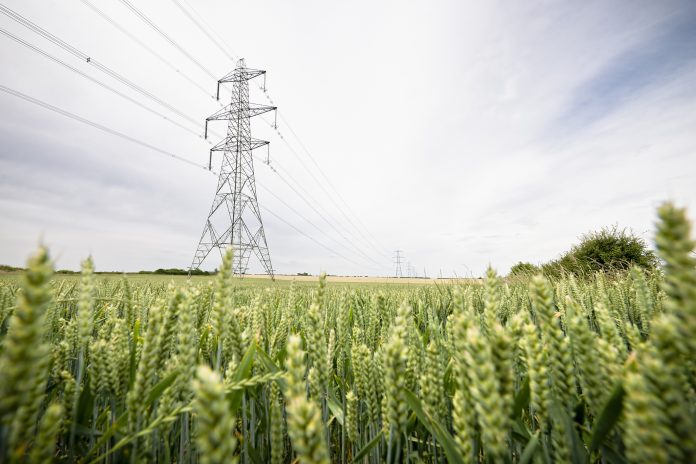Protium tells us about hydrogen’s role in the UK’s pursuit of a cleaner and more resilient energy future and the opportunity to accelerate decarbonisation through strategic local projects
Like many other countries, the UK is facing the challenge of modernising its energy infrastructure while simultaneously reducing its carbon footprint. The challenges are multi- faceted, ranging from intermittent renewable energy sources to the need for energy storage and grid stability. Here, we look at how a more agile, less conventional approach to green hydrogen might just deliver a solution.
A growing role in the energy transition
Green hydrogen is increasingly recognised worldwide for its importance in the transition to a net zero economy. It has the potential to decarbonise multiple sectors of the economy by providing an energy resource for hard-to-abate industries, a zero-carbon transportation fuel for larger vehicles, an on-demand carbon- free fuel for power generation, and a cleaner residential heating fuel.
The UK Government has highlighted the critical role that green hydrogen will play in its energy system, supporting both UK energy independence and carbon reduction targets within its 2022 British Energy Security Strategy – in which the Government laid plans to double the UK’s hydrogen production, up to 10GW by 2030.
While headlines often focus on large-scale and major hydrogen projects, often imagined to be serving as massive, straightforward electricity storage facilities, a more compelling argument for hydrogen may lie in a step change away from conventional thinking. Instead, one exciting approach is to look to smaller, more focused projects with greater flexibility to deal with the challenges facing the National Grid.
Supporting localised production
Electricity distribution is moving away from centralised production based on fossil fuels and towards localised production as more renewables are added to the grid. The rate at which the UK is achieving this historical shift is commendable, however, National Grid is struggling to keep up with the rate
of change.
Smaller-scale green hydrogen projects can contribute to this by servicing more localised demand. Excess electricity can be converted into hydrogen close to electricity production, reducing the need for electricity transmission. As a storable energy vector, hydrogen can then be utilised at a later point, for example,
in industrial heating applications.
These projects can also be deployed more rapidly, building up a network across the UK that can better negotiate regulatory frameworks and scales of investment to play a full part in the development of low-carbon hydrogen.
Optimising intermittent renewable sources
In 2022, 40% of UK power came from renewable or low-carbon sources, including nuclear. However, their intermittent nature poses a significant challenge to grid stability. Localised and decentralised hydrogen plants – rather than a single large one – can react flexibly to supplies and peaks of electricity on the grid, all in different locations. Any imbalances in the grid would not just be in one specific location but rather spread around
the grid.
Decarbonising hard-to-abate sectors – and equity in regions
While the UK has made significant progress in decarbonising its electricity generation – other sectors such as heavy industry, transportation, and heating remain challenging to
electrify directly.
There are also equity considerations and implications within the UK because more remote areas grid-wise mean fewer options to increase energy consumption via electricity, leading to energy-deprived regions that will potentially be left behind in the energy transition. Green hydrogen can increase the amount of usable energy in these regions due to its flexibility in production and consumption. This extends to electric vehicles, industrial heat, and indoor heating.
Challenges and considerations
Electrification has been seen by many as the route to decarbonisation, but the reality of achieving this is starkly different. A recent independent report by Nick Winser, the UK’s Electricity Networks Commissioner, examined how to accelerate the deployment of strategic electricity transmission infrastructure. “Currently, the expectation is that strategic transmission may take twelve to fourteen years from identification of the need to commissioning,” he writes.
Challenges around hydrogen that must be addressed include reducing hydrogen production costs, the need for infrastructure development, and ensuring the sustainability of hydrogen production methods. Additionally, the efficiency of hydrogen production, storage, and conversion technologies needs to be improved to maximise the benefits of using hydrogen as an energy carrier. So, there is no single silver bullet – green hydrogen complements electrification by presenting an opportunity to de-bottleneck and decongest areas of the grid that struggle with the rate of change.
The proof is in the delivery
Small ideas can have big impacts, as Protium is demonstrating already, by working on initiatives in the UK and aiming to deliver 1GW by 2030. A great example of this is Protium’s partnership with AB InBev, where the companies are working on UK projects together to decarbonise the Budweiser Brewing Group operations. Most significant is the plan for a green hydrogen production facility at AB InBev’s site in Magor, South Wales, which produces one billion pints of beer per year – 8% of the UK’s beer. The facility will provide heating for the operations and for HGVs and forklifts.
In summary and recommendations
Hydrogen can offer a versatile tool in the pursuit of a cleaner and more resilient energy future. There is a golden opportunity to accelerate decarbonisation through strategic local projects – particularly in hard-to-electrify sectors and remote areas.
It is, therefore, vital that future energy planning has a focus on smaller assets. Making more projects a reality requires an easier planning and permitting process; the option for hydrogen to be brought in at an earlier stage in localised planning and establishing ancillary services on the grid, enabling easier connection of hydrogen production facilities.
Protium
enquiries@protium.co.uk
www.protium.green
https://www.linkedin.com/company/protium-green-solutions














